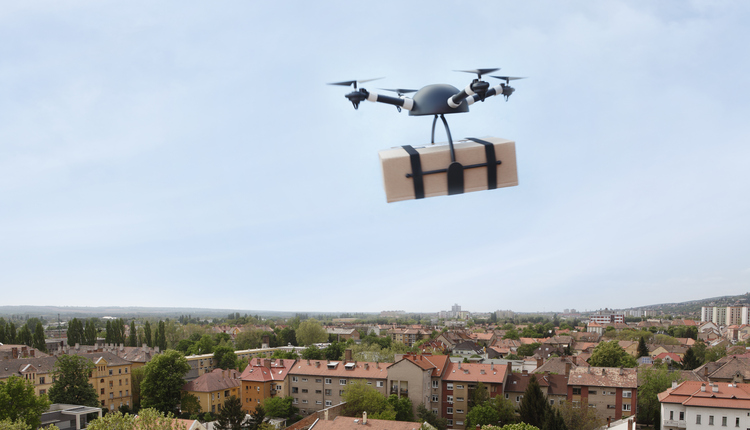Before the pandemic, consumers were satisfied with one-click ordering that came with two-day delivery, or even next-day delivery. Not anymore.
In an extremely short period of time, ordering goods in the morning and having them delivered to your home the same afternoon was recast as a must-have service, providing a lifeline for millions of families. Same-day delivery surged like never before.
The pandemic presented many steep challenges for retailers and their supply chains, but among the most urgent was: how could they get goods as close to the end consumer as possible? Suddenly, retailers of all sizes had to figure out how to re-engineer and extend supply chains locally, transforming logistics and fulfillment into hyperlocalized and distributed operations. And then, they had to figure out how to incorporate flexible, on-demand, reliable, same-day delivery into the equation from all those new locations.
What do businesses need to thrive in this emerging local-delivery world? There are four key expectations.
1. Speed
According to Ware2Go, nearly all consumers – over 90% – see two- and three-day shipping as table stakes. A third of consumers expect same-day delivery. And while customers put up with delayed shipments in 2020 because they really had no choice, don’t get used to it. It won’t last.
COVID basically finished what Amazon started: it taught consumers that they don’t have to wait. Same-day service is available in a variety of models, with a consistency and cost that matches or beats the performance of traditional parcel carriers.
Creating a fast, reliable home delivery program stands to help retailers win big. More than three-quarters of consumers say they are more likely to purchase from a brand again if delivery was fast.
2. Agility, Flexibility, and Optionality
No longer does fulfillment happen from one or two distribution centers. Hyperlocal fulfillment means deconsolidating inventory and spreading it across sometimes hundreds of brick-and-mortar retail sites. Those facilities are now tasked with triple duty responsibilities: offering consumers traditional stores to shop from themselves; operating as local fulfillment centers for online orders shipping direct to consumers; and serving as local pickup sites for buy online, pickup in store (BOPIS) orders.
Consumers are getting anything and everything delivered to their homes. A delivery might be a small package of time-sensitive medicines, a repair part for an appliance, printer ink cartridges, or a new computer monitor — not just stuff that fits neatly into a box. How can retailers manage to deliver every single SKU, especially when traditional carriers are avoiding them, or instituting huge surcharges to handle them?
3. Unlimited Scalability
Traditional fixed-asset networks are capacity constrained, that’s not news. For hub-and-spoke models, adding capacity requires physical facilities and vehicles that can take months to deploy. Even as the major players have ramped up operations, they’re still turning to pricing surges and volume caps to manage demand.
Retailers need a scalable solution that can expand to meet delivery demand in real time, and industry leaders are turning to crowdsourced delivery for the last mile. A crowdsourced network draws on consumers already in the right place in their personal vehicles, store employees, customers, and even local commuters for unlimited, rapid scalability. In a surging e-commerce economy, you need solutions to quickly add delivery capacity exactly where it’s needed in real time.
4. Unprecedented Reach
Consumers everywhere are demanding faster fulfillment. It’s not enough to provide coverage in major metro areas. Home improvement stores and other retailers operate in mid-size, suburban, exurban, and rural communities, as well; same-day networks have to be able to reach into these communities with the same service reliability.
Looking Ahead
Before 2020, last-mile, same-day delivery already was the fastest growing segment of transportation. The pandemic simply became an accelerant to that growth. Shopping behaviors have changed permanently. As more and more consumers figure out how easy it is to get stuff delivered to their doors in a few hours, why waste time going to the store?
The surge in traffic experienced by traditional parcel carriers and courier businesses is expected to continue at least through 2021 and well into next year. Some parcel carriers already have imposed new surcharges, and already are beginning to signal the need for volume restrictions to prevent their networks from being overwhelmed again. Under intense pressure, costs have escalated, rates have risen, and service declined. It’s an infrastructure built to deliver, at its fastest, next-day service.
But increasingly, retailers are realizing that “good enough” is no longer good enough. Flexible, scalable, reliable same-day delivery requires doing something vastly different than we’ve done before: taking the supply chain directly into the communities and towns where your customers live.
Marc Gorlin is Founder & CEO, Roadie (www.roadie.com).
This article originally appeared in the September/October, 2021 issue of PARCEL.














